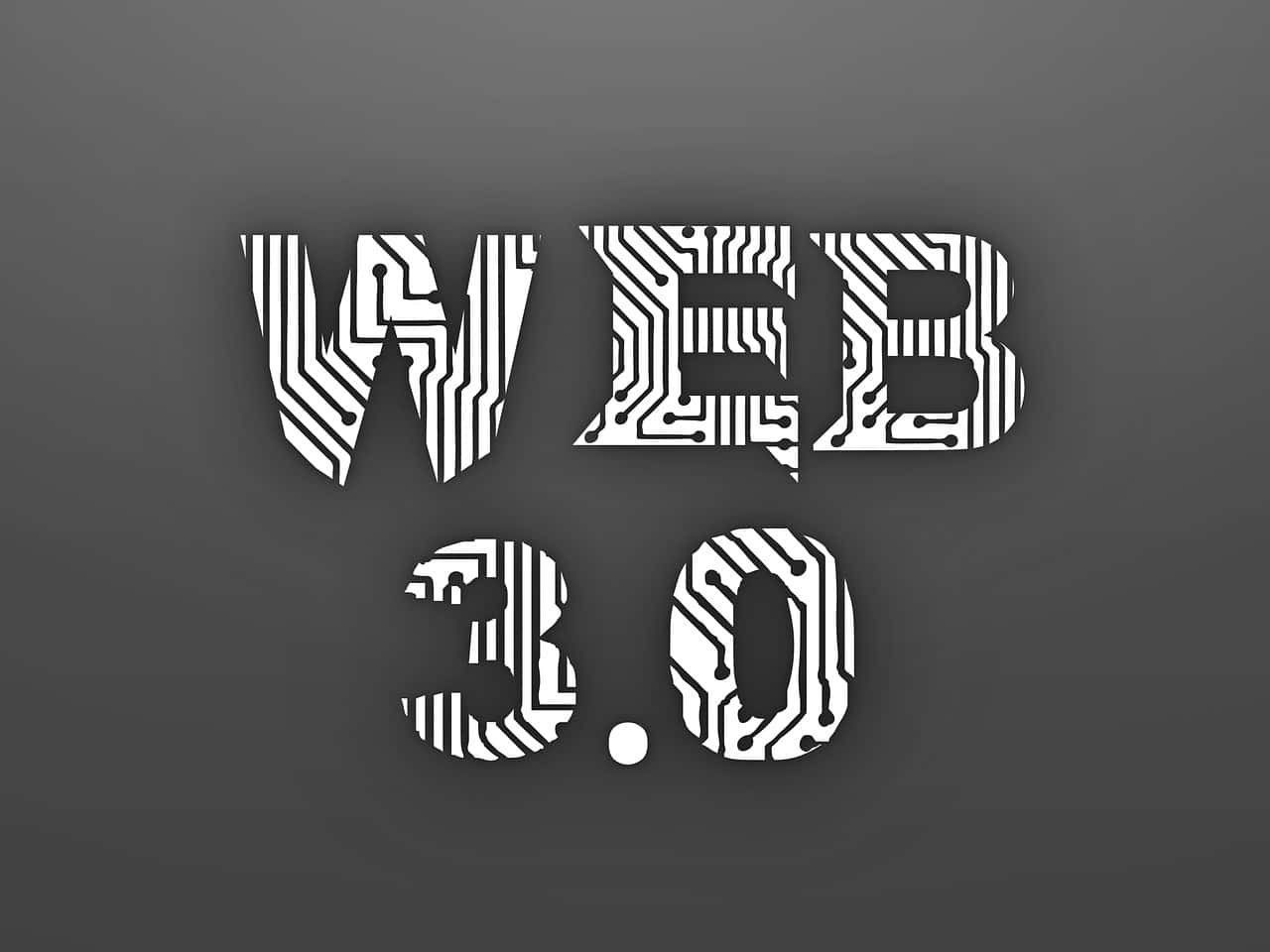Web3 is the future of the internet, and it’s time to get on board. With its decentralized structure and advanced technologies like blockchain, Web3 promises to revolutionize the way we interact online, making it more secure, transparent, and accessible for everyone. Whether you’re a developer or just an average user, understanding Web3 is crucial for staying ahead in today’s digital landscape. So let’s dive in and explore why Web3 is the future.
What is web3 and how does it differ from previous versions of the web?
A Personal Story
As an AI expert at Prometheuz, I have been keeping a close eye on the evolution of the internet. When I first started working in this field, we were just transitioning from Web 1.0 to Web 2.0. The rise of social media platforms like Facebook and Twitter brought about a new era of user-generated content and interaction.
But now, there’s a new kid on the block – Web 3.0, also known as the decentralized web or web3 for short. Unlike its predecessors, web3 is built on blockchain technology and promises to be more secure, private, and decentralized than ever before.
Web3 is fundamentally different from previous versions of the web in several ways:
1. Decentralization
One of the key features of web3 is its decentralized nature. Instead of relying on centralized servers controlled by large corporations like Google or Amazon, web3 applications are hosted on a network of computers that work together to maintain consensus and validate transactions.
This means that no single entity has control over the network, making it more resistant to censorship and manipulation.
2. Security
Web3 uses advanced cryptography to secure transactions and protect user data. With end-to-end encryption and smart contracts that execute automatically based on predefined conditions, users can trust that their information will remain safe and secure.
3. Interoperability
Unlike traditional siloed applications that operate independently from one another, web3 applications are designed to be interoperable with other apps on the same network. This allows for seamless integration between different services and creates a more cohesive user experience.
Overall, web3 represents a major shift in how we think about the internet – from centralized control by corporations to a more decentralized and user-centric model. As we continue to explore the possibilities of this new technology, I’m excited to see what kind of innovations will emerge.
How does web3 use blockchain technology to enhance security and decentralization?
Exploring Web3’s Security Features
Blockchain technology is at the heart of web3’s enhanced security and decentralization. By using a distributed ledger that records transactions in a tamper-proof manner, web3 applications can ensure that data remains secure and transparent.
Here are some of the ways that web3 uses blockchain technology to enhance security:
1. Immutable Records
In a traditional database, records can be deleted or altered by anyone with access to the system. But with web3, all transactions are recorded on an immutable blockchain ledger, meaning they cannot be changed or deleted once they have been added.
This makes it much harder for bad actors to manipulate data or cover up fraudulent activities.
2. Smart Contracts
Smart contracts are self-executing agreements that run automatically when predefined conditions are met. They enable trustless transactions between parties without the need for intermediaries like banks or lawyers.
By using smart contracts, web3 applications can ensure that transactions are executed exactly as intended, with no possibility for human error or manipulation.
3. Distributed Consensus
Web3 networks rely on distributed consensus algorithms like Proof-of-Work (PoW) or Proof-of-Stake (PoS) to validate transactions and maintain network integrity.
Because these algorithms require a majority of nodes on the network to agree on transaction validity before it is added to the ledger, it becomes much harder for attackers to compromise the network through malicious activity.
Overall, by leveraging blockchain technology in these ways, web3 applications can provide users with greater security and peace of mind than ever before.
In what ways can web3 improve user privacy compared to previous versions of the web?
Privacy in a Decentralized Web
As concerns around online privacy continue to grow, web3 offers a promising alternative to traditional web applications that rely on centralized control and data collection.
Here are some of the ways that web3 can improve user privacy:
1. User-Controlled Data
In a decentralized web, users have greater control over their personal data. Instead of being collected and stored by centralized entities like Facebook or Google, user data is stored locally on their own devices or on a distributed network.
This means that users can choose which information they want to share with different applications and services, without having to worry about it being sold or shared without their consent.
2. End-to-End Encryption
Web3 applications use end-to-end encryption to protect user data from prying eyes. This means that only the sender and recipient of a message have access to its contents – not even the service provider can read it.
This ensures that sensitive information remains private and secure, even if it is intercepted by hackers or other malicious actors.
3. Pseudonymity
Web3 networks often allow users to interact with each other using pseudonyms instead of real names. This provides an additional layer of privacy protection, as users can communicate and transact without revealing their true identities.
Overall, by putting more control into the hands of users and leveraging advanced encryption techniques, web3 has the potential to greatly enhance online privacy for everyone.
What are some real-world examples of how web3 is being used today?
The Growing Impact of Web3
While still in its early stages, there are already several exciting examples of how web3 technology is being used in the real world today.
Here are a few examples:
1. Decentralized Finance (DeFi)
DeFi is one of the most popular use cases for web3 technology right now. By leveraging blockchain-based smart contracts, DeFi applications allow users to transact with each other directly without the need for intermediaries like banks or financial institutions.
This has the potential to greatly reduce transaction costs and increase financial inclusion for people who may not have access to traditional banking services.
2. Identity Verification
Web3 technology is also being used to create more secure and decentralized identity verification systems. By using blockchain-based identity protocols, users can verify their identities without having to rely on centralized entities like government agencies or social media platforms.
This could help prevent identity theft and improve privacy for individuals.
3. Supply Chain Management
Finally, web3 technology is being explored as a way to enhance supply chain management. By using blockchain-based tracking systems, companies can ensure that products are sourced ethically and transported securely from one location to another.
This could help reduce waste, fraud, and abuse in global supply chains while increasing transparency and accountability.
Overall, these examples demonstrate the vast potential of web3 technology to transform a wide range of industries and applications in the years ahead.
How will web3 impact industries such as finance, healthcare, and logistics?
Finance
Web3 has the potential to revolutionize the finance industry by enabling more secure and efficient transactions. Decentralized finance (DeFi) platforms built on blockchain technology allow for peer-to-peer lending, borrowing, and trading without the need for intermediaries like banks. This can provide greater financial access to individuals who may not have access to traditional banking services. Additionally, smart contracts can automate complex financial agreements, reducing the need for lawyers and other intermediaries.
Healthcare
In healthcare, web3 technologies can improve data privacy and security while also facilitating more efficient sharing of medical records between providers. Blockchain-based solutions can ensure patient data is encrypted and only accessible by authorized parties. Smart contracts can also be used to automate insurance claims processing and reduce fraud.
Logistics
Web3 technologies can streamline supply chain management by providing greater transparency and traceability of goods as they move through the system. Blockchain-based solutions can track products from origin to destination, ensuring authenticity and reducing the risk of counterfeit goods entering the supply chain. Smart contracts can also facilitate automated payment processing between suppliers and buyers.
Overall, web3 has the potential to significantly disrupt these industries by introducing more secure, efficient, and decentralized systems.
What role do decentralized applications (dApps) play in the future of web3?
Decentralized applications (dApps) are a key component of web3 ecosystems. These applications are built on blockchain technology and often utilize smart contracts to enable peer-to-peer interactions without intermediaries. They offer users greater control over their data privacy and security compared to centralized apps.
One area where dApps are gaining traction is in DeFi platforms that allow users to lend or borrow cryptocurrencies without relying on traditional financial institutions. Other use cases for dApps include gaming, social media, and file sharing. As more developers build dApps, the web3 ecosystem will continue to grow and become more decentralized.
However, there are also challenges to building and using dApps. They can be slower and less user-friendly than centralized apps, and there is still a learning curve for many users when it comes to managing private keys and interacting with blockchain-based systems. Additionally, the lack of regulatory oversight in some cases can lead to security concerns or fraudulent activity.
How does web3 enable peer-to-peer transactions without intermediaries?
Web3 enables peer-to-peer transactions without intermediaries through the use of blockchain technology. Transactions are recorded on a decentralized ledger that is maintained by a network of nodes rather than a central authority. This means that transactions can occur directly between parties without needing an intermediary like a bank or payment processor.
Smart contracts are another key component of web3 that enable automated execution of agreements between parties. These contracts are self-executing and enforceable based on predetermined conditions. For example, a smart contract could be used to facilitate a real estate transaction where funds are only released once certain conditions (such as transferring ownership) have been met.
Overall, web3 enables greater efficiency and security in peer-to-peer transactions by removing the need for intermediaries.
What are the potential benefits of using cryptocurrencies within a web3 ecosystem?
Cryptocurrencies offer several potential benefits within a web3 ecosystem. One key advantage is their ability to facilitate borderless transactions without the need for currency conversions or intermediaries like banks. They also offer greater privacy compared to traditional payment methods since transactions are pseudonymous rather than tied to personal information.
Another benefit of cryptocurrencies is their programmability through smart contracts. Tokens built on blockchain technology can be designed with specific use cases in mind, such as utility tokens that provide access to certain services or governance tokens that enable voting on platform decisions.
Finally, cryptocurrencies can offer a hedge against inflation and financial instability since they are not tied to traditional fiat currencies. This can provide greater financial access to individuals in countries with unstable currencies or limited access to traditional banking services.
How can smart contracts be utilized within a web3 environment for more efficient and secure transactions?
Smart contracts are a key component of web3 ecosystems that enable more efficient and secure transactions. They are self-executing agreements that automatically enforce predetermined conditions without the need for intermediaries.
One use case for smart contracts is in supply chain management. By recording each step of a product’s journey on a blockchain-based ledger, smart contracts can automate payment processing between suppliers and buyers based on specific milestones being met (such as delivery confirmation). This reduces the risk of fraud or disputes by ensuring all parties have access to the same information.
Another use case for smart contracts is in DeFi platforms where they can automate lending and borrowing agreements between users. Smart contracts can ensure collateral is provided and interest rates are enforced without the need for intermediaries like banks.
Overall, smart contracts offer greater efficiency and security in transactions by automating agreement enforcement without needing intermediaries.
What challenges must be overcome for widespread adoption of web3 technologies?
There are several challenges that must be overcome for widespread adoption of web3 technologies. One key challenge is user experience – many decentralized applications (dApps) are still difficult to use compared to centralized apps, which may discourage mainstream adoption. Additionally, managing private keys and navigating blockchain-based systems can be intimidating for some users.
Another challenge is scalability – current blockchain technology has limitations when it comes to processing large volumes of transactions quickly. This creates bottlenecks and slows down the system as more users join.
Regulatory uncertainty is another challenge facing web3 technologies. Some governments have been slow to develop regulations around cryptocurrency and blockchain-based systems, which has led to uncertainty and in some cases, a lack of investment.
Finally, there is the challenge of interoperability between different blockchain systems. As more platforms are developed, it will be important for them to be able to communicate with each other seamlessly in order to create a truly decentralized web.
Will traditional centralized platforms be replaced by decentralized alternatives in a fully realized version of web3?
It is possible that traditional centralized platforms could be replaced by decentralized alternatives in a fully realized version of web3. Decentralized applications (dApps) offer users greater control over their data privacy and security compared to centralized apps. Additionally, blockchain-based systems can offer greater transparency and traceability compared to traditional systems.
However, it is also possible that centralized platforms will continue to exist alongside decentralized alternatives. Some users may prefer the convenience and ease-of-use offered by centralized apps, while others may value the increased security and privacy offered by dApps.
Ultimately, the success of decentralized alternatives will depend on factors such as user adoption, regulatory environment, and technological advancements.
How might governments and regulatory bodies respond to the rise of decentralized technologies like those found in web3 ecosystems?
Governments and regulatory bodies are still grappling with how to respond to the rise of decentralized technologies like those found in web3 ecosystems. Some governments have been slow to develop regulations around cryptocurrency and blockchain-based systems due to concerns around fraud or money laundering.
However, there are signs that this is changing – several countries have recently introduced regulations around cryptocurrency exchanges or initial coin offerings (ICOs). Additionally, some governments are exploring the use of blockchain technology for government services such as voting or identity verification.
One potential concern for governments is the loss of control over financial transactions if they move away from centralized systems. However, there are also potential benefits such as reduced fraud or corruption if transactions are recorded on a transparent blockchain-based ledger.
Could a fully realized version of web3 lead to greater economic democracy and decentralization?
A fully realized version of web3 has the potential to lead to greater economic democracy and decentralization. Decentralized applications (dApps) offer users greater control over their data privacy and security compared to centralized apps. Additionally, blockchain-based systems can offer greater transparency and traceability compared to traditional systems.
This increased transparency could enable more democratic decision-making in areas such as supply chain management or governance of decentralized platforms. Additionally, the ability for individuals to transact directly with each other without intermediaries could provide greater financial access to those who may not have access to traditional banking services.
However, it is important to note that there are also potential risks associated with decentralization, such as reduced regulatory oversight or increased risk of fraud. It will be important for developers and regulators to work together to ensure these risks are mitigated.
In what ways might the rise of web3 challenge current models of advertising and data collection?
The rise of web3 has the potential to challenge current models of advertising and data collection by providing users with greater control over their personal data. Decentralized applications (dApps) built on blockchain technology can enable users to monetize their own data rather than having it collected by third parties without compensation.
Additionally, smart contracts can automate agreements between advertisers and content creators, reducing the need for intermediaries like ad networks or social media platforms. This could provide more revenue opportunities for content creators while also reducing the amount of personal data collected by centralized platforms.
However, it is important to note that there are still challenges associated with this model – for example, incentivizing users to share their personal data may require significant education efforts around blockchain-based systems.
How might individuals benefit from greater control over their personal data in a fully realized version of web3?
Individuals could benefit from greater control over their personal data in a fully realized version of web3 in several ways. Decentralized applications (dApps) built on blockchain technology can enable users to monetize their own data rather than having it collected by third parties without compensation.
Additionally, greater control over personal data can lead to increased privacy and security. Blockchain-based systems can ensure that personal data is encrypted and only accessible by authorized parties. This reduces the risk of data breaches or hacks that could expose sensitive information.
Finally, greater control over personal data could provide more financial opportunities for individuals. By monetizing their own data, users could potentially earn revenue from sharing their information with advertisers or other parties.
Overall, the rise of web3 has the potential to significantly disrupt industries and introduce more secure, efficient, and decentralized systems. However, there are also challenges associated with this model – including user experience, scalability, regulatory uncertainty, and interoperability between different blockchain systems – that must be addressed in order for widespread adoption to occur.
In conclusion, Web3 is the future of the internet. With its decentralized nature and focus on privacy and security, it has the potential to revolutionize the way we interact online. If you’re interested in exploring the possibilities of Web3 or want to learn more about our AI services, feel free to get in touch with us. We’d love to hear from you!

Why Web3 will change the world?
Web3 technologies have the potential to provide individuals with greater autonomy over their data and assets, as well as allowing them to take part in decentralized networks and platforms. This can result in increased economic and social empowerment.
Why is Web3 important?
Web 3.0 is important as it enables companies to improve their efficiency by eliminating intermediaries and establishing direct links between computers. This leads to better communication and cooperation among employees, partners, and clients, resulting in a more streamlined and productive business.

Is Web3 the future or hype?
Those who believe in Web3’s potential see blockchain as the foundation for the next phase of online existence. However, the reality is likely more complex. The hype surrounding Web3 is intense, with investors pouring billions of dollars into associated startups and Google searches for the term surging by nearly 10,000 percent in the past year.
What problem does Web3 solve?
Web3 addresses the issues by enabling you to manage your digital identity through an Ethereum address and ENS profile. A single login is available through an Ethereum address that is secure, resistant to censorship, and anonymous across various platforms.
How will Web 3.0 impact our lives?
Web 3.0 will allow users to sell their personal data on decentralized data networks, enabling them to retain ownership and control over their information. This data will be generated by powerful computing resources, including mobile devices, computers, household appliances, cars, and sensors. This technology is expected to be available by January 30th, 2023.
What will Web3 be used for?
Web3 technology provides users with more control over their personal data and decentralized data storage. These benefits are largely due to its decentralized structure, which transfers power over the internet away from large technology companies and into the hands of everyday users.









